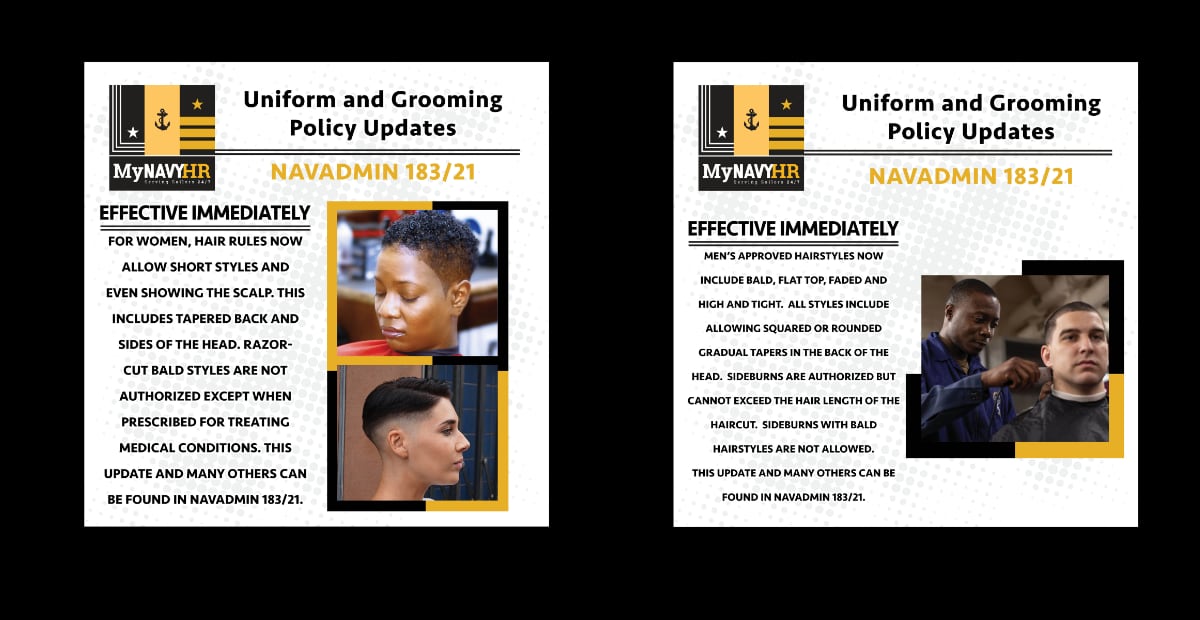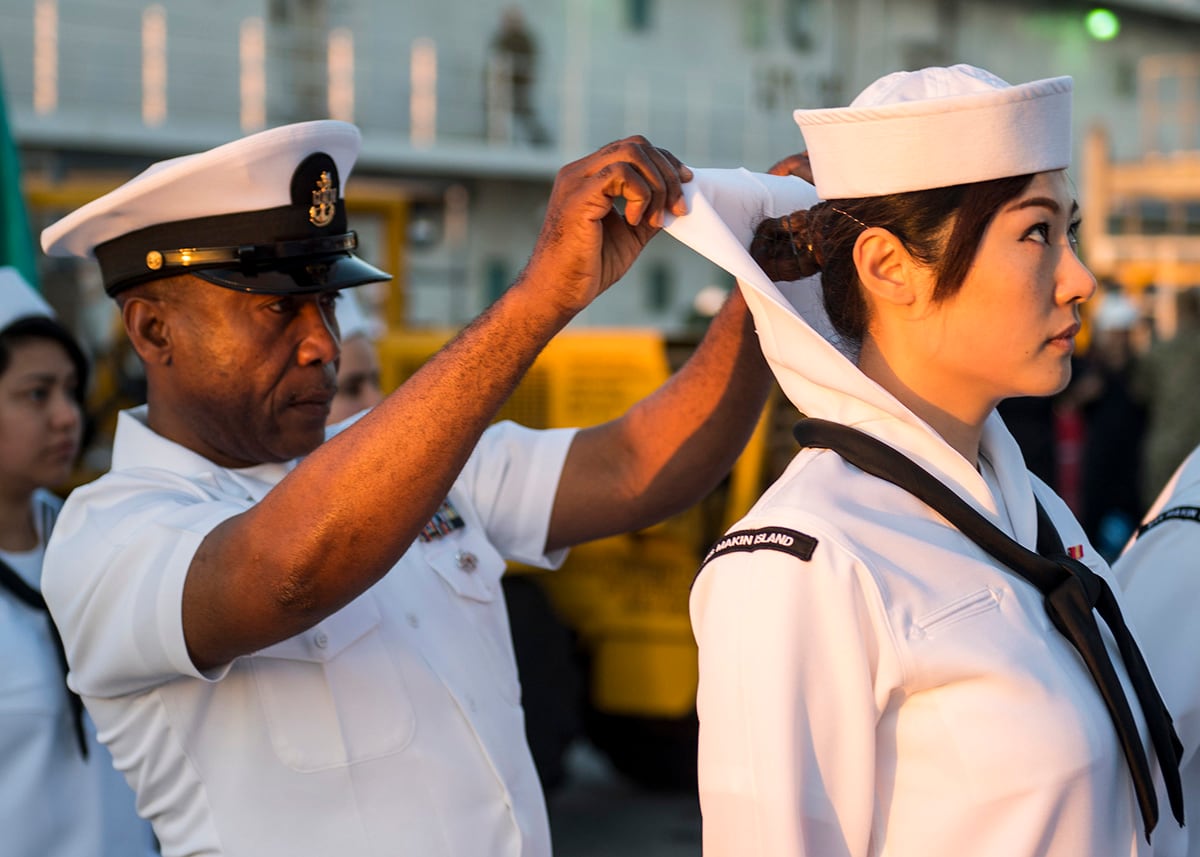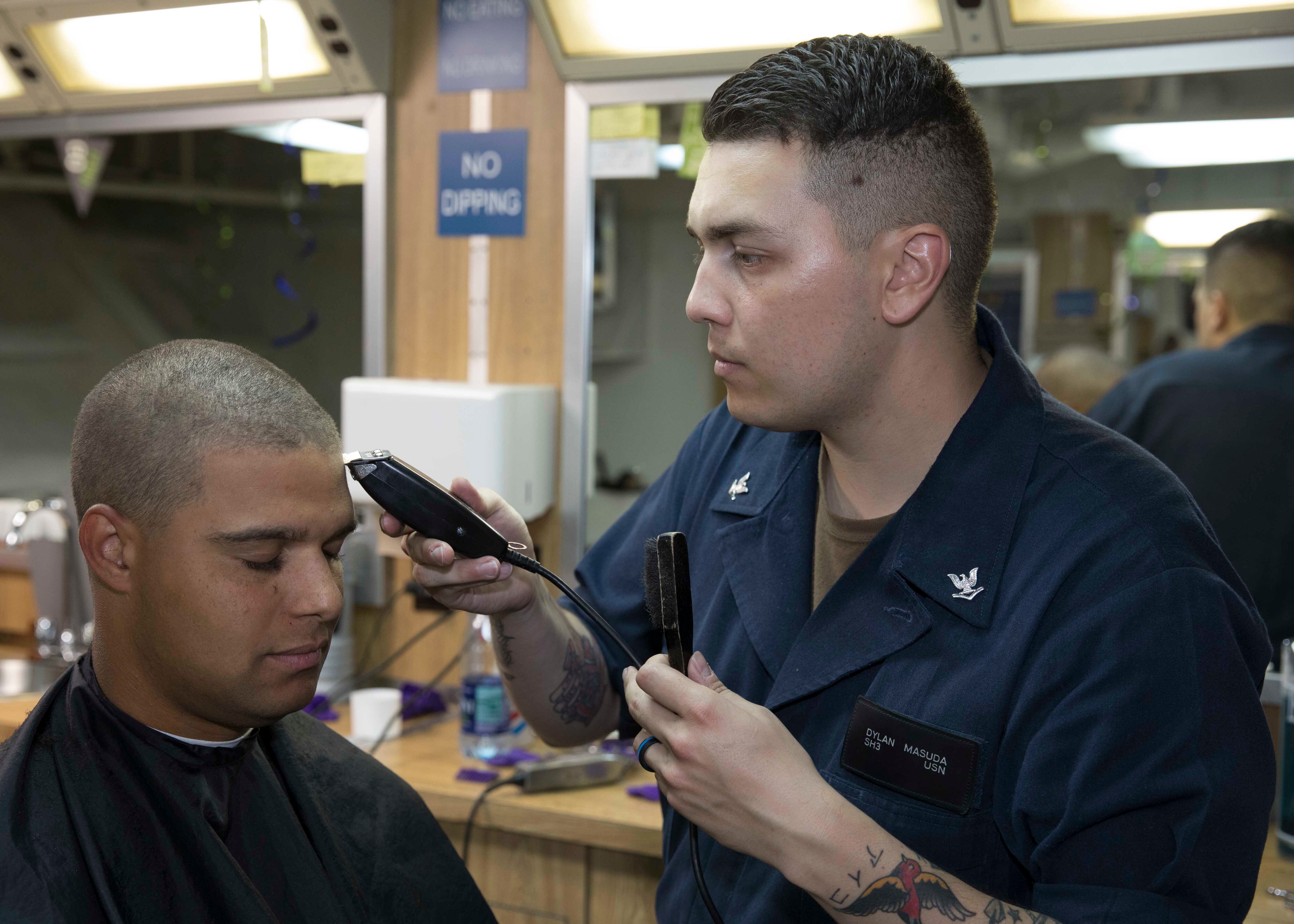The Navy has unveiled a wave of uniform and grooming updates — including multiple hairstyle updates for men and women, and guidance regarding earrings, high heels and smartwatches.
Men are permitted to shave their heads or sport flat tops, faded and high and tight hairstyles that have either squared or rounded gradual tapers in the back, according to a new naval administrative message released Aug. 31. Sideburns may be worn, too, except in the case of bald sailors, if they are not longer than the length of hair.
And women now may wear short hairstyles that reveal the scalp, such as hairstyles that include a tapered back or side. One hard hair part is allowed, and must be no longer than four inches or wider than an eighth of an inch. Bald hairstyles still remain unauthorized for women, except for those with medically prescribed treatment.

“These changes recognize hairstyles that are now pretty standard in society and is also aligned with presenting a professional military appearance while in uniform,” Rob Carroll, head of uniform matters on the staff of the chief of naval personnel, said in a Navy news release.
“This gives women more options for greater ease on hair care, especially while on deployment when longer styles can be tougher to maintain,” Carroll said. “Female Sailors have been asking for this flexibility.”
These hairstyle changes are effective immediately.
RELATED

Another significant change included in the NAVADMIN is earrings for men. Men may don earrings if they are wearing civilian clothes while in a leave or liberty status, regardless of whether they are on a military installation or not. However, they are still barred from wearing earrings while wearing civilian clothes and performing official duties.
Women also have more options wearing high heels in uniform and can wear heels as high as 3 inches now — a slight increase from the previous maximum height of two and five-eighths inches. These heels may be purchased commercially if they align with other uniform standards such as color, design and fabric.
Those who have accents or other forms of punctuation in their legal names will also have those marks reflected on their name tags, name patches, or name tapes on Navy uniforms.
Likewise, the NAVADMIN also stipulates guidelines for prescription glasses and sunglasses, noting that frames must be silver, gray, black, navy blue, brown or gold. It’s also OK if they are translucent or transparent, or have small logos. Sunglasses may also be green.
“There are just so many options available today for glasses and we needed to get some standardization of appearance in uniform,” Carroll said. “This change allows for a wide variety of options, ease of compliance and enforcement as well as maintaining a professional military appearance.”
Black retainer straps may be worn for safety purposes only, and eyeglasses are still barred from being worn on the top of the head or around the neck when not in use.
Fitness trackers and smartwatches may be worn in uniform, effective 60 days from the release.
“Only one wristwatch/smartwatch and one fitness tracker can be worn simultaneously and each on a different wrist,” the NAVADMIN said. “When wearing a bracelet, a wristwatch/smartwatch or fitness tracker is not authorized on the same wrist as the bracelet.”
Colors for these devices worn in uniform may be solid black, brown, dark green, grey, navy blue, tan, white, copper, gold metal, silver metal, or a combination of gold and silver metals.
“Navy uniform policy updates are the result of Fleet feedback, uniform working group discussions, command sponsored requests and direction from Navy leadership,” the NAVADMIN said.
Several of the uniform changes were also addressed during Task Force One Navy listening sessions in 2020 and 2021. The task force was stood up in 2020 in order to address systemic racism within the service, evaluate racial disparities in the military justice system, and examine the fairness of the promotion and advancement process to eliminate “destructive biases.”
“We review commonly asked questions submitted by Sailors from around the fleet, we look at trends, and discuss policy considerations,” Carroll said. “TF1N did not drive the policy changes, but it can be noted that some of the changes align with the Navy’s Diversity, Equity and Inclusion initiatives.”
Read the full list of uniform updates here.





